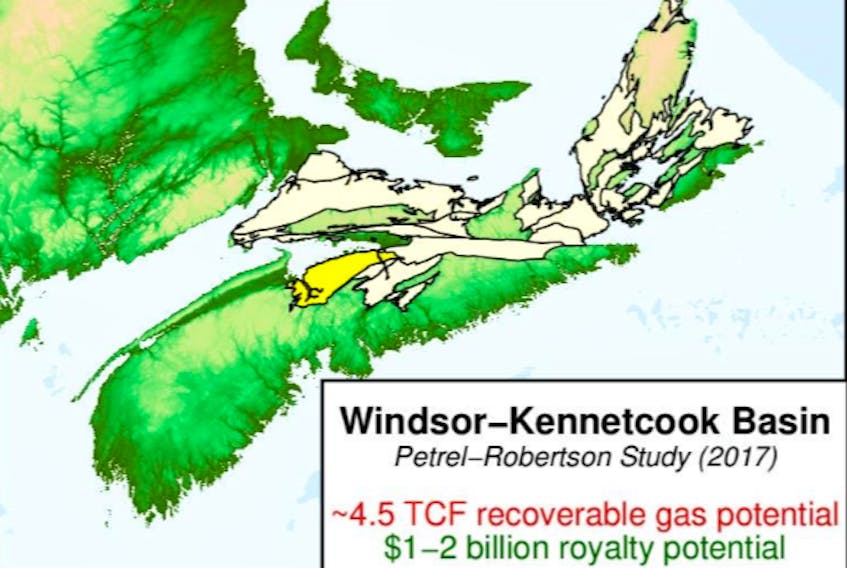WINDSOR, N.S. – A representative of the Ecology Action Centre says a new government study that shows a significant reserve of shale gas in parts of Hants County is a waste of time, money and expertise.
Stephen Thomas, the energy campaign coordinator with the Ecology Action Centre, was reacting to the Onshore Atlas Project, which looks into the fossil fuel potential of the province.
“We need to move beyond fossil fuels and invest time and money in renewable energy development, improving energy efficiency, and meeting our climate targets in a way that benefits Nova Scotians and our growing green economy.” Thomas said.
“The simple fact is that we don’t need this dangerous resource to meet our energy needs or provide economic benefits to our province.”
Thomas said there are now nearly 300,000 jobs in the renewable energy sector in Canada, which is already outpacing the oil and gas sector.
“The possible $20 billion in revenue to a corporation that would exploit this resource is over an 80-year timeframe,” Thomas added.
“Given that this is a new fossil fuel resource, this is completely inconsistent with a livable planet. I find it extremely unlikely that there will be fracking anywhere in the year 2100.”
- More fracking stories
- The community of Kennetcook has been dealing with a large amount of fracking wastewater since 2007.
- Editorial: Fracking moratorium must remain intact.
- Windsor council requests more information on fracking wastewater disposal.
Onshore Atlas
The new government study into the resource potential of Nova Scotia, known as the Onshore Petroleum Atlas Project, has found a significant reserve of shale gas in Hants County.
Regions surrounding the Avon River and along the Hants Shore, in what’s called the Windsor – Kennetcook Basin Study areas, are listed as the highest in qualitative shale gas potential, according to the study.
The study, which was conducted by the Department of Energy staff and external consultants, began in 2013 and wrapped up at the end of 2017, with its findings released in early January.
The numbers in the study are striking: onshore Nova Scotia may host natural gas resources, which includes coal bed methane, shale gas and conventional sources, worth $20 to $60 billion USD according to the study.

The majority of that comes from Shale potential, which would be extracted through hydraulic fracturing or fracking.
The study also says there is a $1 – 2 billion royalty potential from the Windsor – Kennetcook Basin portion of the study alone.
The study also encompassed a large portion of Cumberland, Colchester and Pictou counties, which shows a similar, but smaller potential – with royalties estimated at $0.5 - $1 billion.
The provincial government has banned the extraction of shale gas through hydraulic fracturing, or fracking, with a moratorium on the controversial practise since 2014.
The government committed to keeping that moratorium in place in a mandate letter from Premier Stephen McNeil to the Minister of the Environment in Sept. 2017.
How does fracking work?
A well is drilled far into the earth, usually between 2,000 and 4,000 metres, and a mixture of water and chemicals is used to pulverize shale materials at high levels of pressure to free the natural gas from its solid state. The gas is then extracted.
Why is it so controversial?
The process utilizes chemicals in the extraction method, which can lead to damage of the environment. There’s also inconclusive data that shows fracking could lead to geological instability, causing earthquakes or corrupt surrounding groundwater. Environmentalists also suggest that oil extraction in general is antiquated and newer, cleaner methods of power generation should be explored further. Disposing of used fracking water is also an environmental issue.









